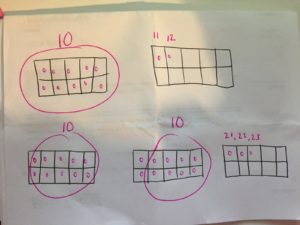Spellings
On Friday mornings at school we would usually complete our spellings and practise some tricky word so I thought I would keep the same structure for the children’s learning at home.
Please find the ‘Phase 2 to 5 High Frequency words’ sheet that I sent home last week. Choose 3 words on the sheet to practise – I will leave this up to you.
There is no harm in repeating words that you child/children can already spell as often they are OK in a spelling ‘test’ situation but can still get muddled when writing them in a longer piece of text.
Once you have chosen the 3 words practise them, you could:
Look, cover, say, write, check
Count down – how many times can you write the word in 1 minute. We have played ‘beat the teacher’ so you could play ‘beat the parent’ at home. Who can write it the most times…. remember it has to be accurate.
Rainbow writing – use different coloured pens to keep repeating the same word. You could do this in a row or keep going over the top.
Tricky word games – you will be able to find these on Phonics play which you have been using this week.
English
Practise spelling the days of the week and remember to apply your tricky words! Can you write one, or two sentences to tell us what you have been doing this week. Think about which words need a capital letter and if you can join two sentences together using the word ‘and’.
For example – On Monday I set the home learning up on the Southill School website and made sure that I had a contact email for all of the Year 1 parents.
On Tuesday I ……
Maths
Counting on from 10. With your ‘tens frames’ can you practise making ‘teen’ numbers. Fill up one of the ‘tens frames’ to show 10. Now ask you adult to put some of the objects into the next frame. How many do you have in total? Remember, you do not need to count the tens frame that is full. You know that it is 10!!!! Count on from there, for example 10, 11, 12 … rather than 1, 2, 3, 4, 5, 6, 7, 8, 9, 10, 11, 12
If you are confident, which I am sure lots of you will be, move onto bigger numbers that have more than one ‘ten’. Use your knowledge of counting in 10’s to support this. If the total was 23 you would be able to count 10 , 20 , 21 , 22, 23
Images below show how to use the ‘tens frames’. We have used these lots of times in class so your child should be familiar with this…

Well done everyone – I have been really impressed with the home learning that I have seen the week!
You are all doing an amazing job! Keep up the hard work!



